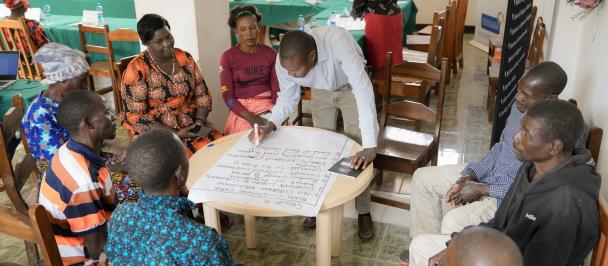Create4 "EcoJaratman Toktogul: Creative Solutions for Ecotourism Development"
September 26, 2023

On September 21-22, more than 200 participants gathered in Cholpon-Ata village of Toktogul district of Jalal-Abad region to work out and agree on ways to develop Toktogul district through ecotourism opportunities and creative cluster development.
The first day of the festival was devoted to discussing mechanisms to increase the tourism potential of Toktogul district. The main emphasis was made on the formation of partnership between government agencies, local governments and tour operators, in order to develop and implement innovative tools to attract investment in the tourism infrastructure of the region. During the event, a draft Memorandum of Cooperation between the Department of Biodiversity Conservation and Protected Areas, the Department of Tourism, the Tourism Development Support Fund and the Kyrgyz Association of Tour Operators was agreed upon to promote the development of regional ecotourism, biodiversity conservation and stimulate local development.
Tour operators were presented with new tourist routes in specially protected natural areas - Alatai, Kan-Achuu and Saimaluu-Tash. The 15 tourist routes developed with UNDP support will become the basis for the formation of the region's tourism potential.
There was also a session on the development of creative cluster and its impact on the local community. Speakers shared their experience in creating creative communities and developing territories as tourist destinations in other regions of the republic.
Akylbek Tyukebaev, head of Toktogul district state administration - akim, in his speech emphasized the key role of tourism in the socio-economic development of the district. The akim expressed hope that the "Create4: EcoJaratman Toktogul Festival" will be a starting point for launching creative ideas and new initiatives to develop tourism, especially ecotourism, in the district, with a focus on preserving biodiversity and achieving financial sustainability of the Alatay Nature Park, as well as creating new jobs for the local population.
"The festival provides us with a platform to establish partnerships with tour operators and key organizations in the tourism industry, demonstrates the tourism potential of the district, and allows us to identify strategic directions for future cooperation" noted Akim. He expressed hope for the successful promotion of new tour routes, developed with the support of UNDP, and emphasized the need to create a public association "Destination Toktogul". "Our efforts are aimed at attracting more tourists and to reveal all the opportunities and show the beauty of Toktogul district", concluded the head of the district.
The partner of the event, Public Foundation "Women's Peace Bank", presented the interim results of the UNDP project "Women's Creative Lab", which can become one of the drivers of development of the creative cluster of Toktogul.
"By providing guesthouses, guides and souvenirs, local women can earn a steady income during the tourist season. And to attract tourists and brand the area, such festivals should be held regularly. Regular holding of such events will discipline local people to receive internal and external tourists, for which they are not yet ready in Ketmen-Tobo and Cholpon-Ata. Such tourist events should be organized by local residents with the close support of LSGs and RGAs," said Gulsana Abytova, Director of the Women's Peace Bank Public Foundation.
The festival featured a fair of goods from local craftswomen, creative performances and a Birdwatching demonstration tour. Residents of the Women's Creative Laboratory analyzed the potential of the tourist destination, learned about the role of museums in the formation of the creative cluster, and participated in a master class on the "kurak" technique.
The festival became a platform for developing joint measures aimed at developing and promoting local tourism products and services, building up the region's tourism infrastructure and promoting the financial sustainability of protected areas, thus providing comprehensive support for biodiversity conservation and local development.


 Locations
Locations

